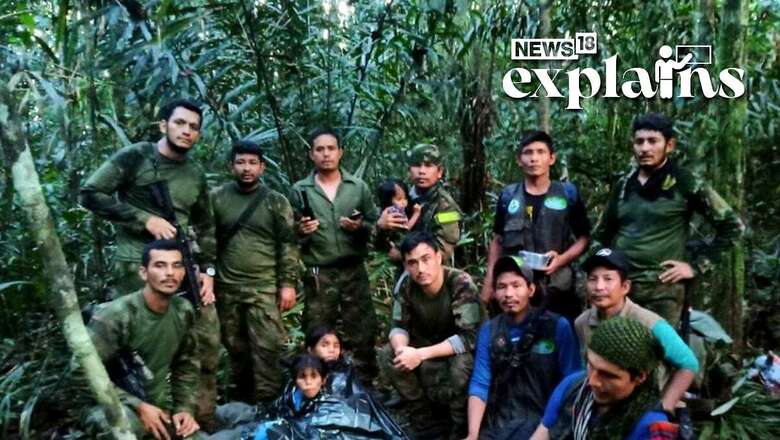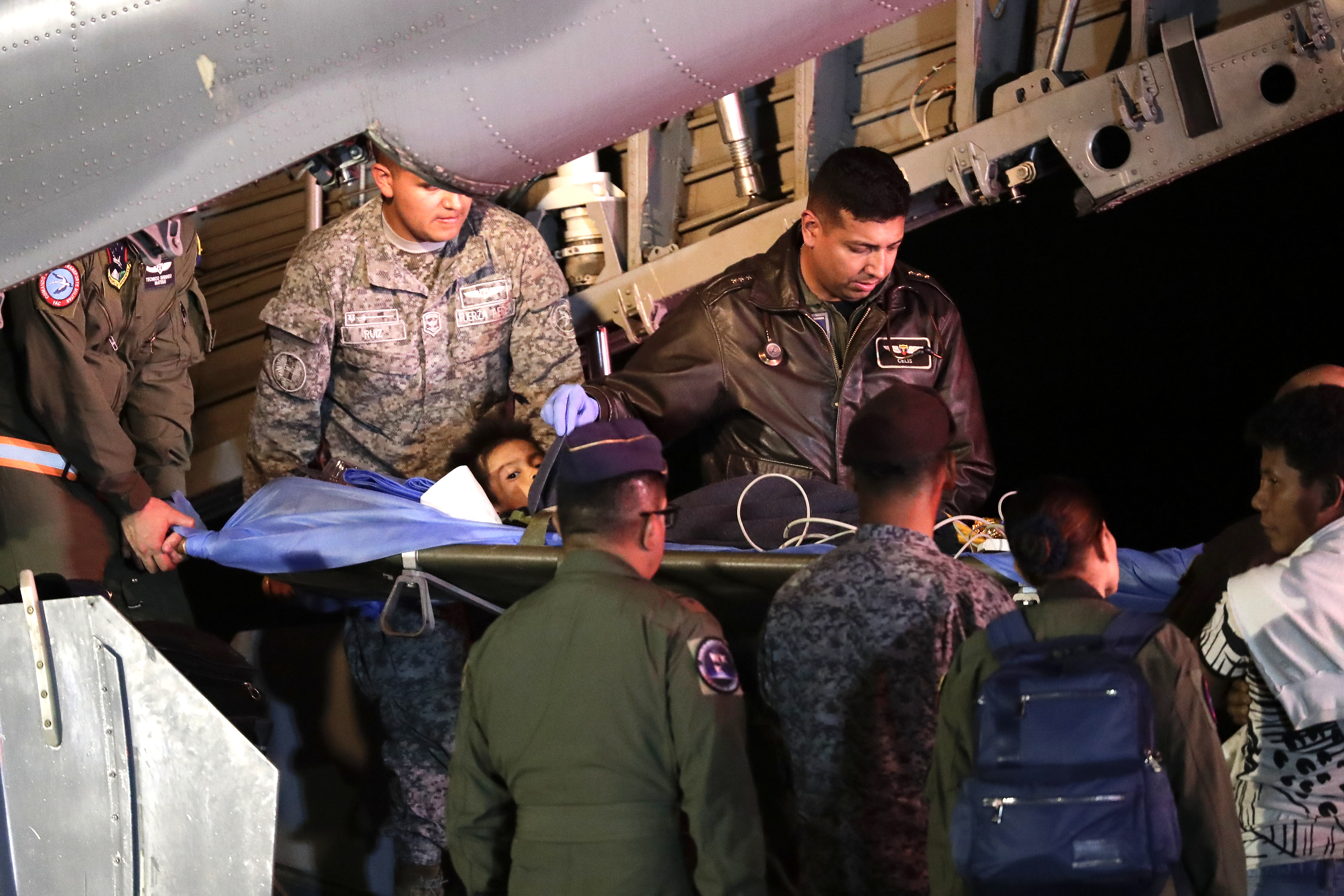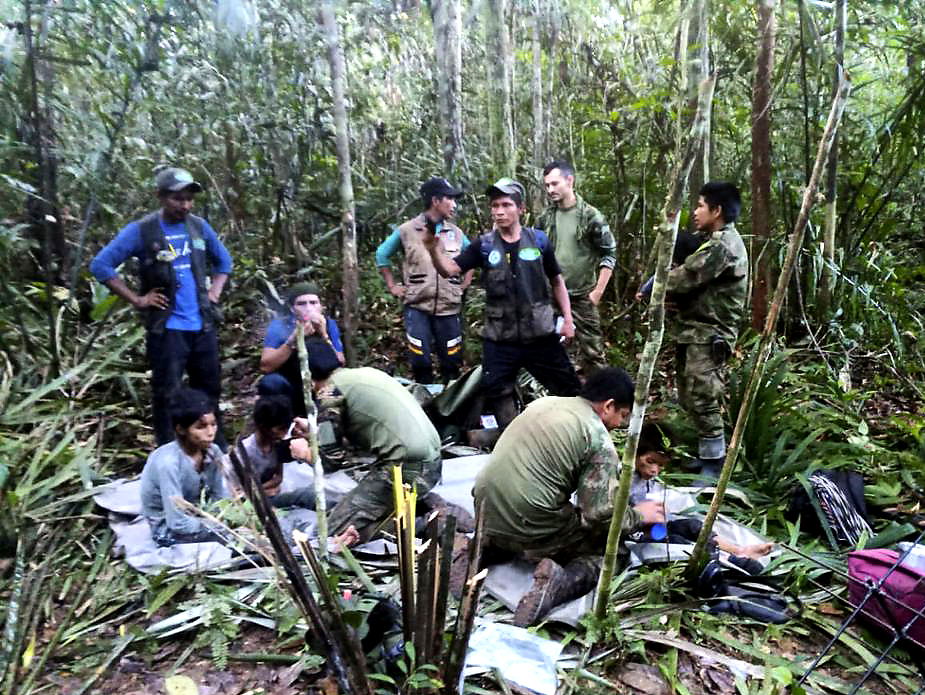
views
After enduring an exhausting and challenging ordeal, four Indigenous children, who had been missing in the Colombian Amazon rainforest for over a month, were joyfully reunited with their relatives on Saturday.
The siblings, who had been alone and wandering in the jungle following a tragic plane crash that claimed the lives of their mother and two adults, were eventually located through a determined rescue operation involving sniffer dogs, helicopters, and aircraft.
When found, the children appeared thin and weak. They were then transported by an army medical plane to a military hospital in Bogota, as witnessed by AFP journalists on-site. Defense Minister Ivan Velasquez, accompanied by President Gustavo Petro, visited them in the hospital and reported that they are in the process of recovery, although they are not yet able to consume solid food.

So, how did the children survive alone for a month in the jungle? News18 explains:
How Did they Crash?
The children, aged 13, nine, five, and one, belong to the Huitoto Indigenous group, according to an AFP report. They had been missing in the jungle since May 1, when the plane they were traveling in, a Cessna 206, crashed. Shortly after takeoff from Araracuara, a remote area in the Amazon, the pilot reported engine problems during the 350-kilometer (217-mile) journey to San Jose del Guaviare.
Tragically, the bodies of the pilot, the children’s mother, and a local Indigenous leader were discovered at the crash site. The plane was lodged vertically in the trees. Authorities revealed that the group had been fleeing threats posed by members of an armed group.
So, How Did They Survive?
Despite being malnourished and having insect bites, none of the children were in critical condition. The military shared pictures on social media showing a group of soldiers and volunteers posing with the children, as per the Guardian. The photos depicted the children wrapped in thermal blankets, surrounded by the rescue team that discovered them. One particular picture showed Cristian, the one-year-old child, being held tenderly by a rescuer.
“They’ve given us an example of total survival that will go down in history,” Colombia’s president, Gustavo Petro, said, according to the report.
In a treacherous and unforgiving environment teeming with jaguars, snakes, and other predators, as well as armed drug smuggling groups, the courageous siblings faced an incredible challenge. However, the dense jungle was not entirely foreign to them, AFP reported.
“These are Indigenous children who possess deep knowledge of the jungle. They know what to eat and what to avoid. It is their spiritual strength combined with this knowledge that enabled their survival,” remarked Luis Acosta from the National Indigenous Organization of Colombia. The children’s grandmother, Fatima Valencia, shared that 13-year-old Lesly, with her warrior-like spirit, protected her younger siblings.

When discovered, the children had ingeniously wrapped rags around their feet to navigate the muddy forest floor. Due to the dense vegetation, rescuers had to employ winches to lift them onto helicopters, as landing aircraft was not feasible.
During their astonishing 40-day survival in the Amazon jungle following the plane crash, cassava flour and a basic familiarity with the rainforest’s fruits played a vital role, as explained by the children’s uncle, Fidencio Valencia. He revealed that after the crash, they salvaged cassava flour (known as fariña) from the wreckage, which sustained them. When the fariña supplies depleted, they resorted to consuming seeds.
The children’s ordeal coincided with a fruitful period in the jungle. Astrid Cáceres, head of the Colombian Institute of Family Welfare, mentioned that the children had the opportunity to eat fruits as “the jungle was in harvest,” the Guardian report.
Officials praised the eldest sibling, a young girl, for her bravery and knowledge of survival in the rainforest. It was her guidance that led the siblings through the arduous journey.
“This is an untamed forest, dense and perilous,” warned John Moreno, an Indigenous leader from the nearby Vaupés region. “To endure, they must have relied on ancestral wisdom.”
In addition to eluding jungle predators, the children weathered fierce storms, all while being mindful of the presence of armed groups in the area.
How Were They Finally Rescued?
A massive search operation unfolded, capturing global attention, as 160 soldiers and 70 Indigenous individuals with exceptional knowledge of the jungle rallied together to locate the missing children after the plane crash.
Army chief Helder Giraldo expressed his astonishment on Twitter, stating that rescuers had covered a staggering 2,600 kilometers (1,650 miles) in their relentless pursuit. He hailed the success as a remarkable collaboration between Indigenous wisdom and military expertise, representing a path toward a new Colombia.
During the search, trackers discovered vital clues such as footprints, a diaper, and partially eaten fruit, which provided reassurance that the search was headed in the right direction.
Concerned that the children might continue to wander, making their rescue increasingly challenging, the air force devised a strategy. They dropped 10,000 flyers into the forest, containing instructions in both Spanish and the children’s own Indigenous language, urging them to stay put. The leaflets also included survival tips, while the military airdropped food parcels and bottled water.
To maintain hope and motivation, rescuers played a recorded message from the children’s grandmother, imploring them not to move from their location. According to military reports, the children were found approximately five kilometers (three miles) west of the crash site.
After enduring weeks in an environment teeming with snakes, mosquitoes, and other wildlife, the children’s incredible survival story took another twist. On Friday, a military sniffer dog successfully located the children, alive and well.
According to the children’s accounts, they had spent some time with a dog, forming a bond with their four-legged companion. However, the dog, a Belgian Shepherd named Wilson, eventually disappeared. As of Saturday, the military continues their search efforts to locate Wilson.
AFP contributed to this report


















Comments
0 comment